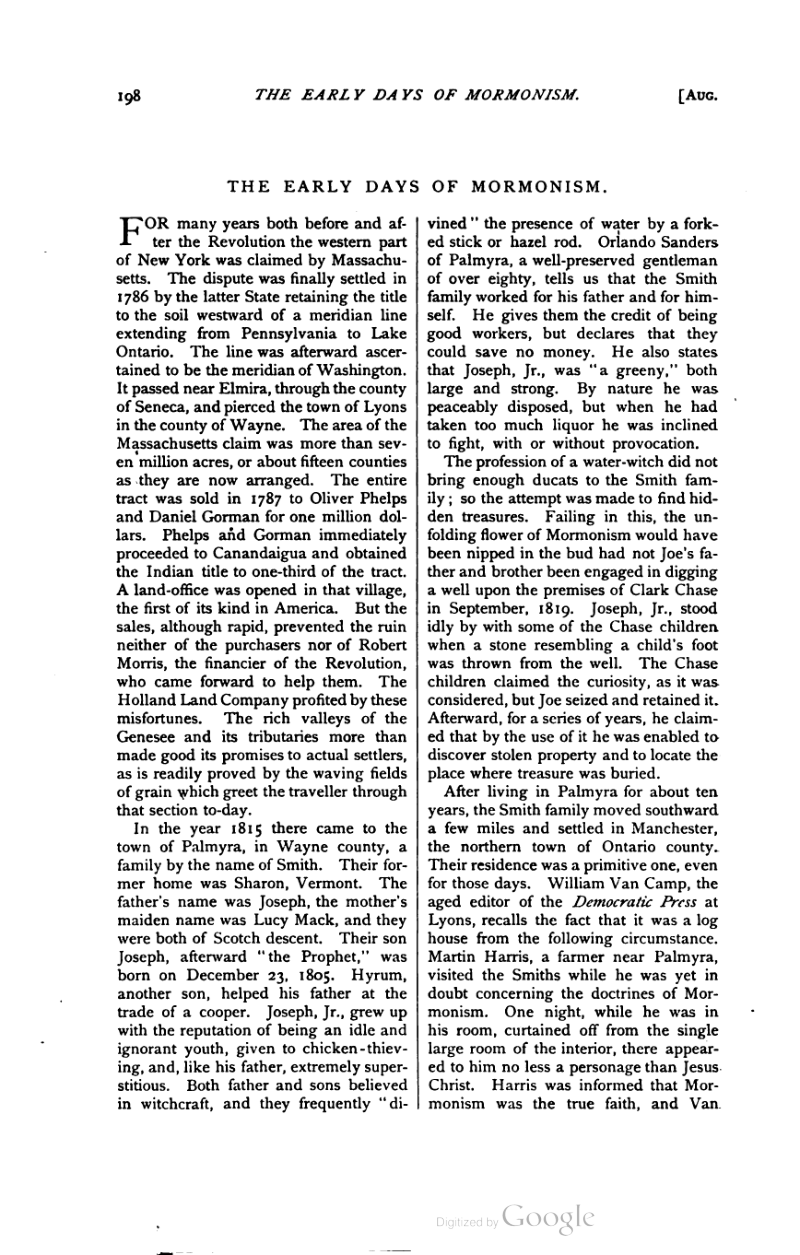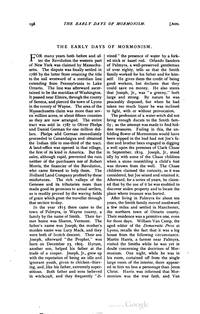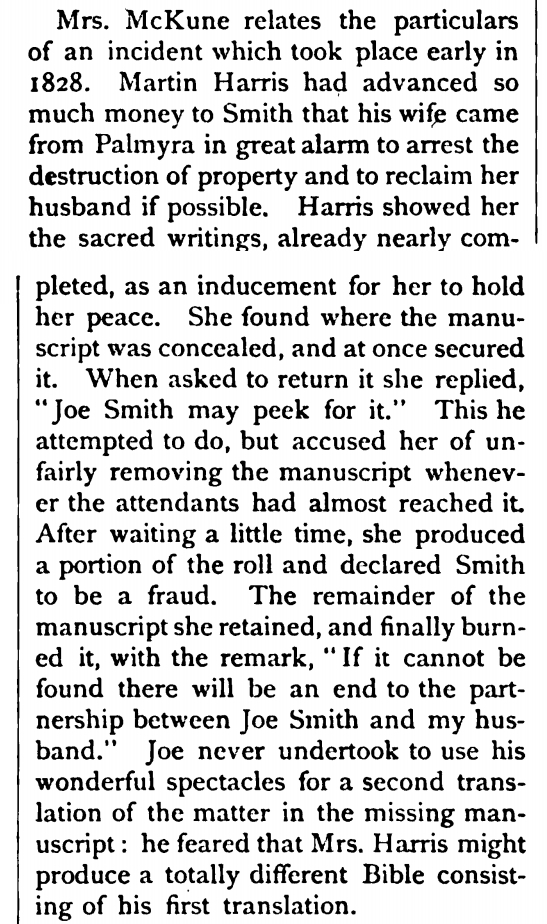Smith got seer stone from well; used it for "peeking."
- Type
- Periodical
- Source
- Frederic G. Mather CriticNon-LDS
- Hearsay
- 3rd HandLate
- Reference
Frederic G. Mather, "The Early Days of Mormonism," Lippincott's Monthly Magazine 26 (Aug. 1880), 198-200, 202
- Scribe/Publisher
- Lippincott's Magazine
- Audience
- Reading Public
- Transcription
The profession of water-witch did not bring enough ducats to the Smith family; so the attempt was made to find hidden treasures. Failing in this, the unfolding flower of Mormonism would have been nipped in the bud had not Joe's father and brother been engaged in digging a well upon the premises of Clark Chase in September, 1819. Joseph, Jr., stood idly by with some of the Chase children when a stone resembling a child's foot was thrown from the well. The Chase children claimed the curiosity, as it was considered, but Joe seized and retained it. Afterward, for a series of years, he claimed that by the use of it he was enabled to discover stolen property and to locate the place where treasure was buried.
[198]
. . .
Joe Smith had paid several visits to this region when the first settlers were struggling with the wilderness. It was a much wilder country than that about Palmyra, and the inhabitants were much more credulous. Upon these people Smith practised with his peek-stone. A number of aged persons now living in that vicinity give this description of the prophet: He was six feet or a trifle over in height; of stout build, but wiry; his hair and complexion were light; his eyes were blue and mild; and "he did not look as if he knew enough to fool people so," as one lady expresses it. When "peeking" he kneeled and buried his face in his white stovepipe hat, within which was the peek-stone. He declared it to be so much like looking into the water that the "deflection of flight" sometimes took him out of his course. On a wilderness-hill—now a part of Jacob J. Skinner's farm—his peek-stone discovered a ton of silver bars which had been buried by weary Spaniards as they trudged through the Susquehanna. . . . Joe tracked it with his peek-stone to its hiding-place. It was not so far under the surface this time—only about twenty feet—and the faithful again worked with a will.
[199]
. . . Mr. Hale owned a farm on the north side of the river, a mile and a half below the present borough of Susquehanna. He had three daughters, two of them already married. The second daughter, Emma, was easily persuaded to join her fortunes with those of the adventurer. The father, however, made so much opposition that they crossed over into the State of New York, and were married at Windsor, a neighboring town. This was probably early in 1826. Mr. Hale threatened to shoot his son-in-law—the "Peeker," as he called him—if he ever returned.
[200]
Mrs. McKune relates the particulars of an incident which took place early in 1828. Martin Harris had advanced so much money to Smith that his wife came from Palmyra in great alarm to arrest the destruction of property and to reclaim her husband if possible. Harris showed her the sacred writings, already nearly completed, as an inducement for her to hold her peace. She found where the manuscript was concealed, and at once secured it. When asked to return it she replied, "Joe Smith may peek for it." This he attempted to do, but accused her of unfairly removing the manuscript whenever the attendants had almost reached it.
[202]
- BHR Staff Commentary
- Citations in Mormonr Qnas
The B. H. Roberts Foundation is not owned by, operated by, or affiliated with the Church of Jesus Christ of Latter-day Saints.



